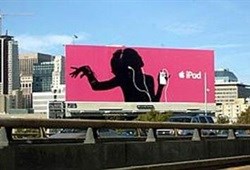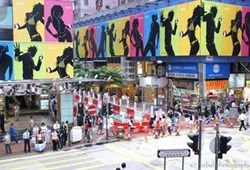
Top stories




LegalTsotsi star’s house, bought with lottery funds, frozen by Special Tribunal
Raymond Joseph 16 hours


More news


This morning when I typed the word 'globalization' (USA spelling) into Google, I got 35.6 million hits. When I typed in the word 'urbanization', I got only 13.6 million. People seem to think that the process of globalisation is more important than the process of urbanisation. I have little doubt that this is wrong. To see why, consider the picture below.

It's hard to tell where these pictures were taken. The writing on the left looks Arabic or perhaps Indian. The picture on the right is reminiscent of a busy Saturday morning in Shanghai or Hong Kong. No matter, neither is in the United States. And yet, nestled in the midst of these vibrant urban landscapes is a brand that could not be more American: McDonalds. McDonalds are not doing quite so well these days; and they did have to adapt their menus as they spread across the globe. But they've had a decades good run. And they did it on the back of a quintessentially American formula: fast, clean, basically affordable food. How was this possible?
Worldwide, we are living through what will probably be the last great migration of people off the land into the cities. According to the United Nations, the world passed the 50% mark sometime during 2008. It is an unstoppable process as people search for wealth and opportunity; and it's a good thing - because cities are the best social design we've come up with for the creation of wealth and opportunity. This is urbanisation; and it's one of the best things that could have happened to any brand with global ambitions - because you could not have created a better ecology for global branding than is found in the modern urban environment.
Apple makes the point. Here are two pictures from the campaign that brought Apple to the attention of the world.


When I show the first picture to people I always ask them what language she speaks (she's obviously a 'she'). Of course you can't tell and I don't know. What city is she in? Again, we don't know. It could be Shanghai, Dubai, San Francisco, Cape Town, Sydney, Buenos Aires... who knows? On the right, another picture, this time in Hong Kong.
And so we can't tell which country these people come from, what language they speak, who their grandparents might have been, or what they consider to be their historical and cultural roots. And yet we know exactly who they are: they are modern young people moving to music in a peculiarly individual and yet social way - in any great 21st century city. The only mark of traditional identity to which Apple paid any attention was gender - because, as a matter of fact, most men and women look different when they dance.
And that's the point: across the world, people in urban environments are becoming more like each other, than any of them are like their rural grandparents.
I don't for a minute think that it was the campaign that made the iPod the global phenomenon it became. Apple took a simple device and out-designed all its competitors by making it aesthetically appealing and easy to use. But there's no doubt that iPod communications helped: the flat black silhouettes set against a flat pastel background; the recognition that the resulting historical anonymity would work everywhere; the clear white outlines of the device that transports these silhouettes into a world of pleasure and personal sound - it's genius.
Apple Inc. have continued to leverage the way in which urbanisation creates a common global culture. There are few better examples than one of the campaigns for the Apple Watch ('For all the ways you connect, the Watch is here'). Anthropologists will tell you that friendship and love are deeply bound to culture and tradition. Well... tradition's edges get knocked off in the modern urban environment. Across the world, the combination of urbanisation and modern communication are creating a cultural convergence that is perfectly suited to global branding. While it still takes great creative to leverage the opportunity, it has never been easier to build a global brand.
Summary: All the talk is about globalisation. It should be about urbanisation. Urbanisation creates a cultural convergence that makes global branding possible. There are few better examples than the campaign that launched Apple's iPod.